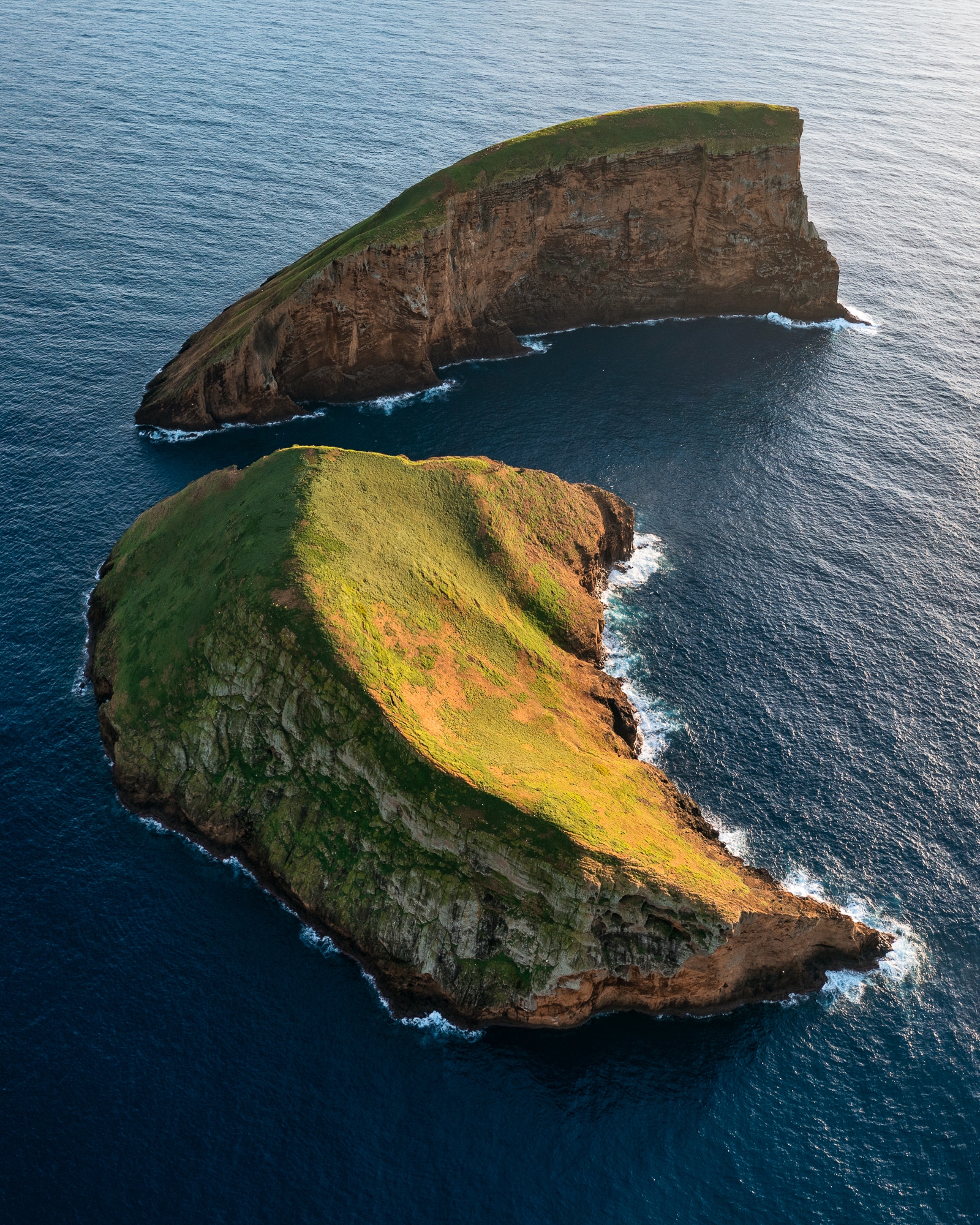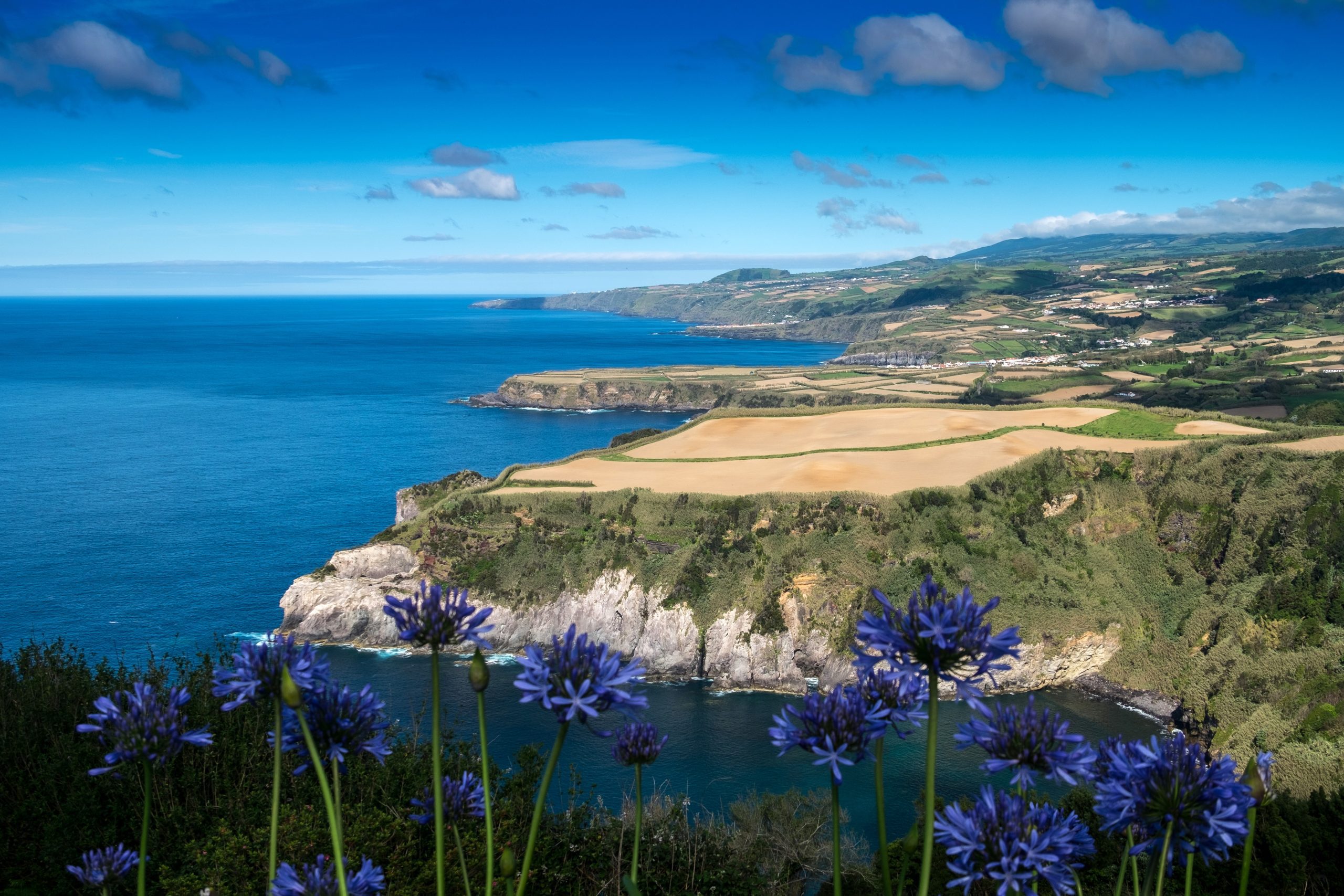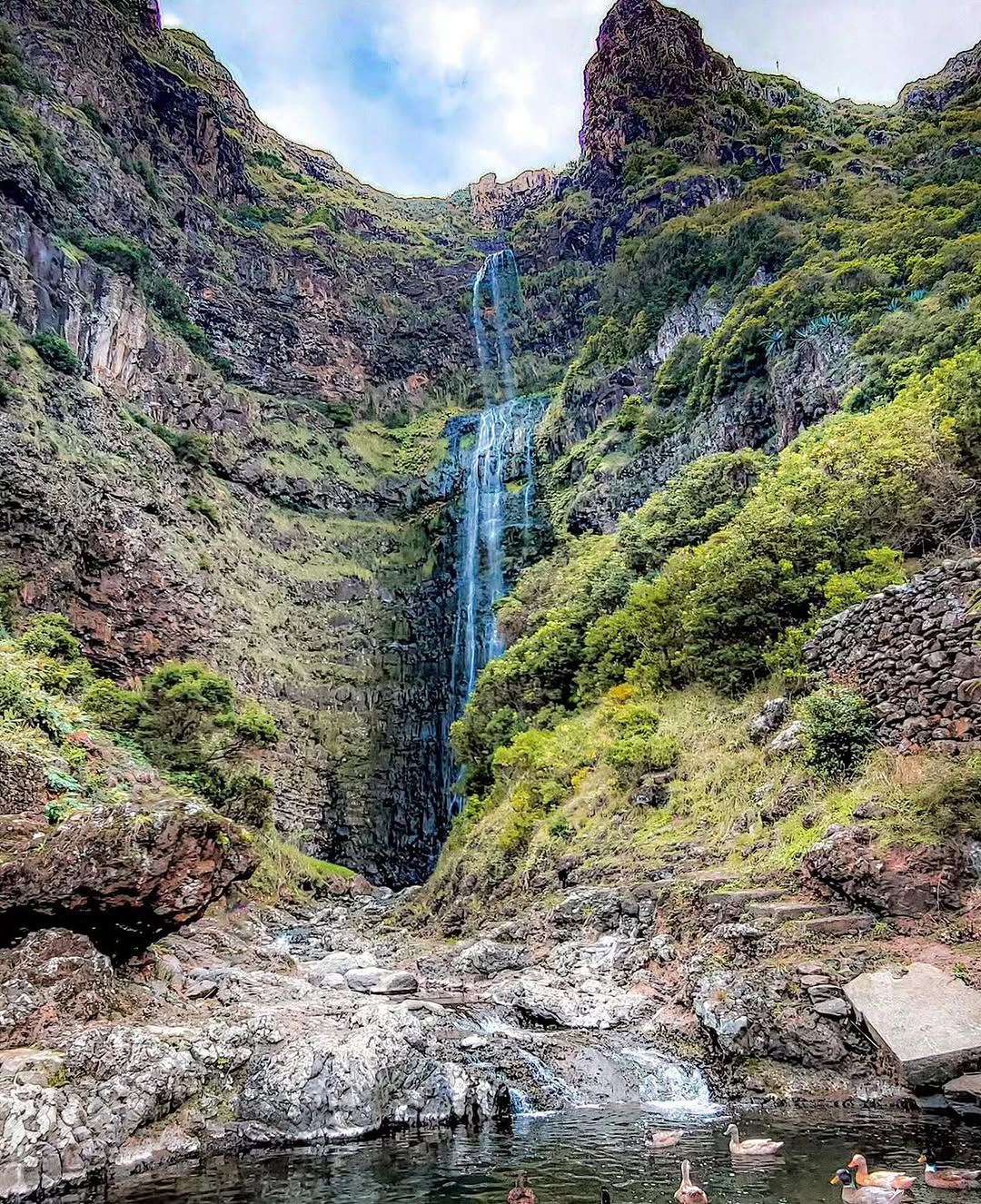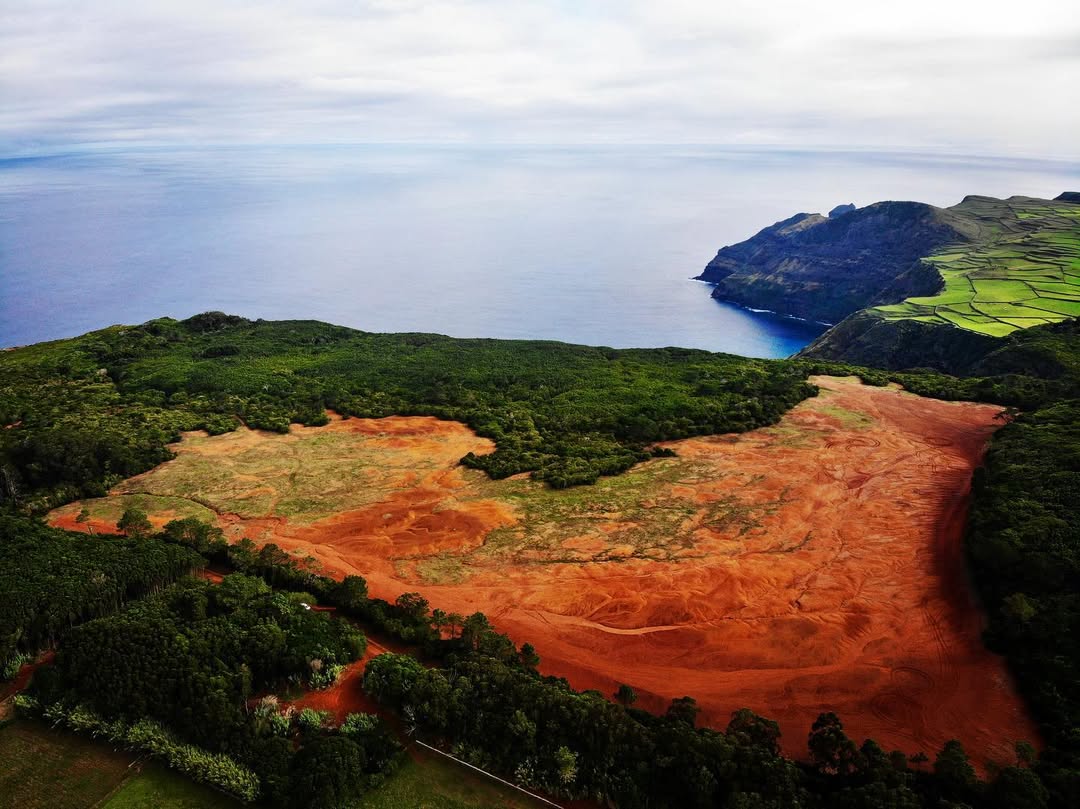Praia Formosa, also known as Playa Hermosa, is located in the parish of Almagreira, in the municipality of Vila do Porto, in Santa Maria. People consider this beach the oldest bathing area in the Azorean archipelago, and it has become a world reference for hosting the annual Maré de Agosto International Festival.
This festival has attracted crowds since 1984 and features great artists of national and international renown. In this article, we’ll explain the history of the oldest beach in the archipelago and the main points of interest in the region.
Where is Praia Formosa

Praia Formosa is a unique bathing area, which is considered by many to be one of the most beautiful in the archipelago. With shallow, clear waters and a long stretch of fine, light-colored sand, the oldest beach in the Azores is much appreciated by its visitors.
Quick Info
Unlike most of the archipelago’s beaches, which have black sand, Praia Formosa has lighter sand due to limestone particles.
Currently, this place has good support infrastructure for bathers. The facility provides access for people with walking difficulties, as well as free car parks, toilets, showers, bars, and restaurants. It also has a campsite.
With an average water temperature of around 22 °C in summer, lifeguards monitor the beach to ensure it remains safe. The beach receives the distinction of the Bandeira Azul annually, allowing you to swim in peace.
History & Geography
The island of Santa Maria, also known as the “Sun Island”, was the first to form in the Azorean archipelago. Curiously, it was also the first to be discovered and populated by the Portuguese.
Thus, in the middle of the 16th century, Praia Formosa was already mentioned on the Map of the Azores under the name “Playa Hermosa”. This map, dated 1584, was made by Abraham Ortelius and Luís Teixeira, the cartographer/geographer and the royal cosmographer, respectively.
Culture & Festivities
The Maré de Agosto International Festival is the Azorean archipelago’s oldest and most prominent event. It takes place every year in August in Praia Formosa. It originated in 1984, when a group of local artists came together to organize a meeting of musicians on the island, inadvertently launching a world-famous event.
Artists and visitors received the festival so well that it became a major musical event. Now in its 39th year, Maré de Agosto takes place annually. Only in 2020, due to the pandemic, was that year’s edition suspended.
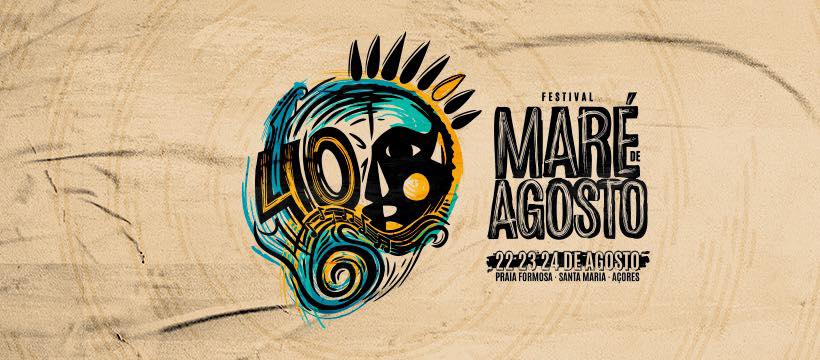
Did you know
In 1987, they officially established the Maré de Agosto International Festival, and with it, they founded the Maré de Agosto Cultural Association (ACMA). ACMA’s main objective is to ensure the annual organization of the event.
Fauna & Flora
The island of Santa Maria is characterized by its geological richness. It also stands out from the rest for its natural beauty, present in the green fields, the dark ocher of the earth, the golden sandy beaches, and the turquoise waters.
As you might expect, Praia Formosa also stands out for its natural beauty, framed by the high green slopes of the Ribeira da Praia Valley.
In addition, Praia Formosa is a protected area and classified as a Nature Reserve due to its marine fauna of great geomorphological importance.
What to Do in Praia Formosa

Praia Formosa is one of Santa Maria’s most popular bathing areas. Here you can sunbathe, dive into the warm, crystal-clear waters, and enjoy moments of leisure and socializing with your family and friends.
Surfers and bodyboarders also consider this beach one of the best spots for their sports. For this reason, it is also a reference point in the archipelago for practicing various water sports all year round.
👉 Post related: Best Beaches in the Azores Islands. Read more!
Plan Your Visit to Praia Formosa

Best Time to Visit
Due to its location further south and west in the archipelago, the climate on Santa Maria is drier and warmer than on the other islands. However, as you might expect, periods of rain and lower temperatures are more frequent in the winter months.
In this sense, the best time to visit Praia Formosa is usually between May and September, when the days are sunny and more inviting for swimming. However, it is essential to note that cloudy skies are a common feature throughout the archipelago, so you may sometimes find it challenging to appreciate the true splendor of its beaches and viewpoints.
Check all our articles about the weather in the Azores throughout the year 🌤️ ☔️: January | February | March | April | May | June | July | August | September | October | November | December
How to Get to Praia Formosa
Leaving the municipality of Vila do Porto in the direction of the parish of Almagreira, you’ll have to travel around 8 kilometers to reach Praia Formosa. To make the journey to your destination, you have several options at your disposal: you can choose to travel by car/motorbike, taxi, public transport (bus), bicycle, or on foot.
Following the EN1-2A, the journey takes approximately:
- Car, motorbike, or taxi: 12 minutes.
- Bus: 10 minutes — although the journey by bus only takes 10 minutes, you’ll have to allow for another 38 minutes on foot. In other words, this journey takes 48 minutes in total.
- Bicycle: 33 minutes,
- On foot: 1 hour 35 minutes.
However, if you prefer to be in touch with nature, you can make your way through Valverde. The route takes 33 minutes by bike or 1 hour and 22 minutes on foot.
Planning a trip to the Azores? These articles will help you: How to Get to the Azores 🗺️ | Azores airports 🛬 | Flights between islands ✈️ | Ferries between islands ⛴️ | Which island to choose? 🏝️ | What airlines fly to the Azores? 🛩️
Where to Eat
If you need somewhere to eat near Praia Formosa (Vila do Porto), click here. In this link, you’ll find the 10 best restaurants on TripAdvisor.
Where to Stay
To make your life easier, we’ve filtered the search by:
Nearby Attractions
Vila do Porto

Vila do Porto is the capital of the island of Santa Maria and is located in the parish of Vila do Porto, in the municipality of the same name.
Founded in 1432 by Gonçalo Velho Cabral, Vila do Porto was the first town in the Azorean archipelago. People founded the municipality of Vila do Porto a few years later, in 1470, and they subdivided it into five parishes: Almagreira, Santa Bárbara, Santo Espírito, São Pedro, and Vila do Porto.
So if you’re passing through the island, be sure to visit the main attractions of Vila do Porto, such as:
- Miradouro de São Lourenço;
- Pico Alto;
- Gonçalo Velho Lighthouse;
- Baía da Raposo;
- Figueiral Cave;
- Baía dos Anjos;
- Cascata do Aveiro;
- Among others.
Fort of São João Baptista in Praia Formosa

The Fort of São João Baptista da Praia Formosa, also known as the Castle of São João Baptista or Castle of the Beach (Castelo da Praia), is located in Praia Formosa, in the parish of Almagreira, in the municipality of Vila do Porto.
People built this small fortification in the 15th or 16th century to protect the island’s population from pirate and corsair attacks, which were once common. Curiously, this fort is possibly the oldest in the Azores.
Although the building is currently in ruins, Castelo da Praia has a privileged location by the sea, with panoramic views over the ocean and Almagreira.
Church of Nossa Senhora da Assunção
The Church of Nossa Senhora da Assunção, also known as the Mother Church of Vila do Porto, is located in Vila do Porto, the capital of Santa Maria Island. This church is one of the oldest in the Azorean archipelago.
Stonemason Estevão Ponte and carpenter João Roiz built the church in the 15th-16th century, but they made alterations during the 17th and 19th centuries. Of this, only a Gothic-style ogival side door and a Manueline-style ribbed vaulted ceiling in the Chapel of Santa Catarina remain from the original construction.
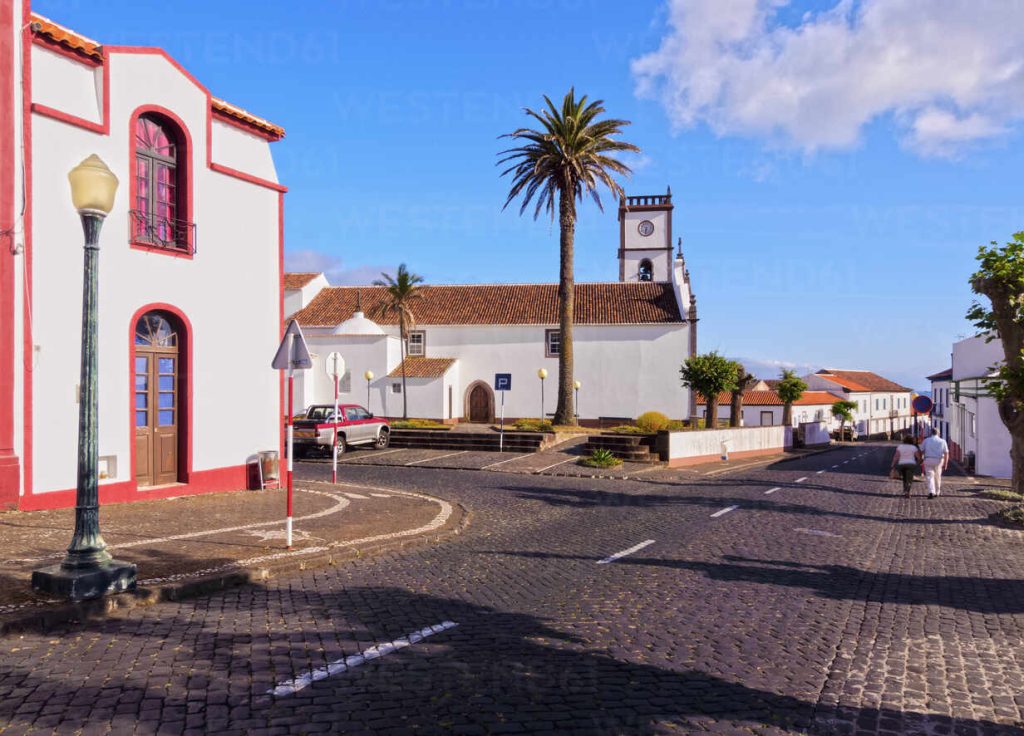
Did you know
Locals celebrate the feasts of Nossa Senhora da Assunção, the patron saint, every year on 15 August with a mass and procession.
The architects divided the church into three naves, separating them with arches and red stone columns. Inside, there are altars with Baroque sculptures from the 18th century and some Flemish images from the early 16th century, especially the Nossa Senhora com o Menino Jesus (Our Lady with the Child Jesus).
Dalberto Pombo Environmental Interpretation Center (House of Fossils)
The Dalberto Pombo Environmental Interpretation Center (CIADP), also known as the House of Fossils, is located in Vila do Porto. You can find it just across from the Mother Church of Vila do Porto, in the heart of the island’s oldest town.
This museum honors Dalberto Pombo, a pioneer in geological research on Santa Maria Island. He dedicated his life to studying the island’s fossils, endemic species, and unique geological formations. The museum offers an engaging way to learn about the island’s origins and natural history.
It’s the perfect first stop to understand the landscape and biodiversity you’ll encounter across Santa Maria.

Did you know
Dalberto Pombo also helped trace the path of sea turtles, discovering that 90 percent of the sea turtles seen in the Azores were born on the beaches south of Florida.
Miradouro da Pedra Rija


The Miradouro da Pedra Rija is located in the heart of the island of Santa Maria, specifically in the village of Arrebentão, in the municipality of Vila do Porto. To access this place, you should take the regional road (ER2-2) to the parish of Santa Bárbara, where the viewpoint is located on the side of the road.
From here, you’ll have a magnificent view over the green fields, hills, and valleys of the parish of Santa Bárbara, with the Atlantic Ocean in the background. In addition, on days with favorable weather conditions, you can see the southeast coast of the neighboring island of São Miguel.
Check all our articles about each one of the most relevant points of interest on Santa Maria Island: Praia Formosa | Barreiro da Faneca | Cascata do Aveiro | Miradouro Vigia da Baleia
Video
Conclusion
Praia Formosa is a unique seaside resort on the island of Santa Maria and in the Azores archipelago. The long sandy beach and transparent waters are ideal for enjoying games and walks by the sea with family and friends. The beach also has pleasant, inviting water temperatures.
After enjoying the beach, take the opportunity to get to know the unique beauty of the municipality of Vila do Porto. Here, you will have the chance to visit and explore some monuments, museums, churches, viewpoints, trails, bays, and beaches.
People should note that the cost of living in Vila do Porto is relatively pricier than in São Miguel. It’s advisable to start planning your trip and include all the points of interest you want to visit in an itinerary.
Authors’ Note
I am pleased to inform you that all the recommendations in this article are based on my personal experience and observations. As the author, I have personally visited each attraction mentioned, ensuring that every suggestion is grounded in first-hand knowledge and genuine enthusiasm.
FAQs
Praia Formosa is one of the few white sand beaches in the Azores, renowned for its crystal-clear and calm waters. It is perfect for swimming, picnics, or relaxing under the sun. During the summer, it hosts popular events and festivals, attracting locals and tourists alike.
Visitors can enjoy swimming, snorkeling, and walking along the surrounding dunes. The beach is also ideal for photography, especially at sunset, and offers a serene environment for relaxation.
Yes, the beach offers amenities such as showers, restrooms, and nearby dining options. Accommodations are also available in Praia Formosa, making it convenient for those looking to explore more of Santa Maria Island.
Praia Formosa is about a 10-minute drive from Vila do Porto, the island’s main town. It is easily accessible by car or taxi, with clear signage to guide visitors to the beach.
What sets Maré de Agosto apart is its beautiful seaside location at Praia Formosa, offering festival goers the chance to enjoy live music while surrounded by breathtaking natural beauty. The event blends a lively music scene with the peaceful vibe of Santa Maria Island.


